Exhibition: Stefan Canham, Rufina Wu – Portraits from Above
Opening: 18.5.16, 6 pm
Artist’s talk: 19.5.16 5 pm
Vicolo della Parrocchia, BAF – Bolzano Architecture Festival
Exhibition: 18.5. – 21.5.16
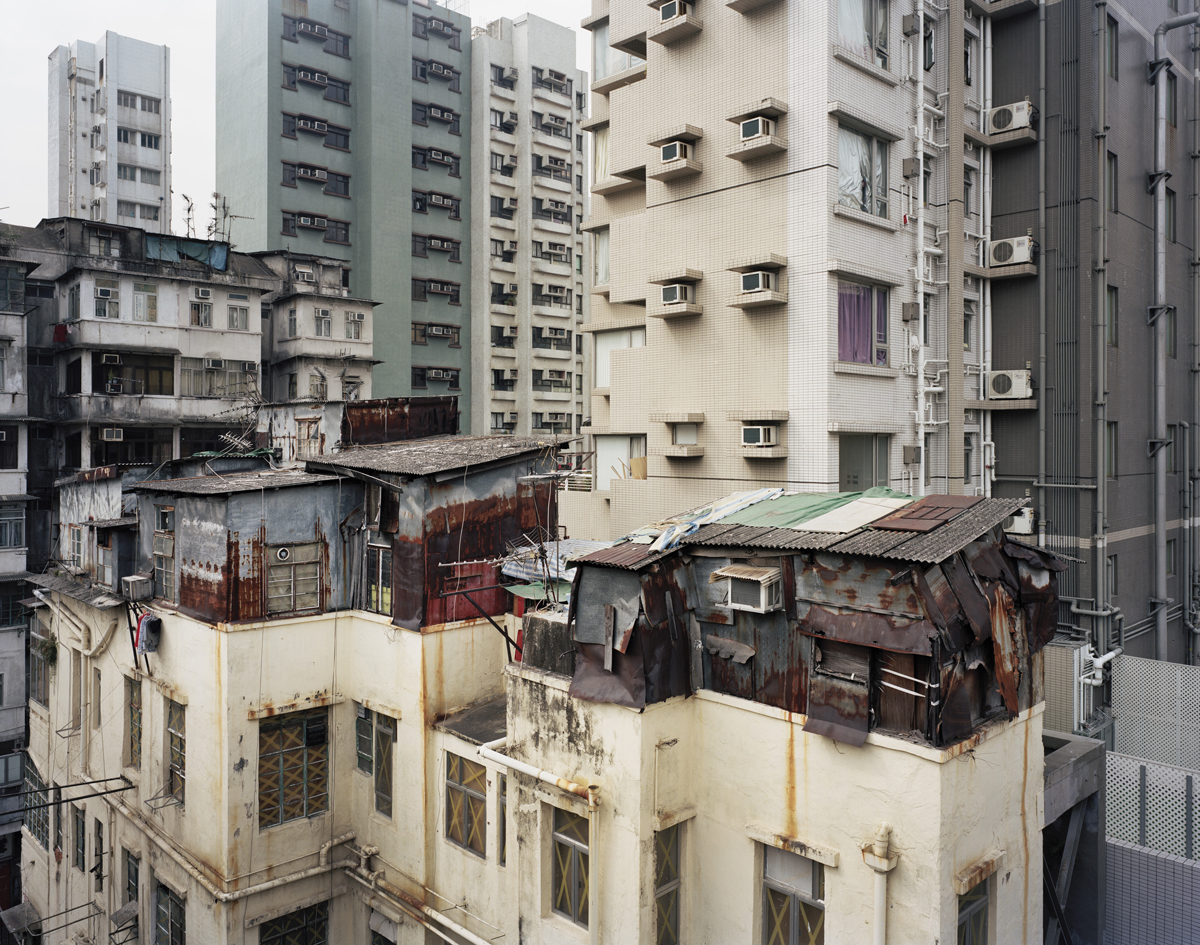
Stefan Canham, Protraits from Above
There is no elevator. We walk up the eight ights of stairs, hesitating on the last one, looking at each other, out of breath: we have no right to be here.
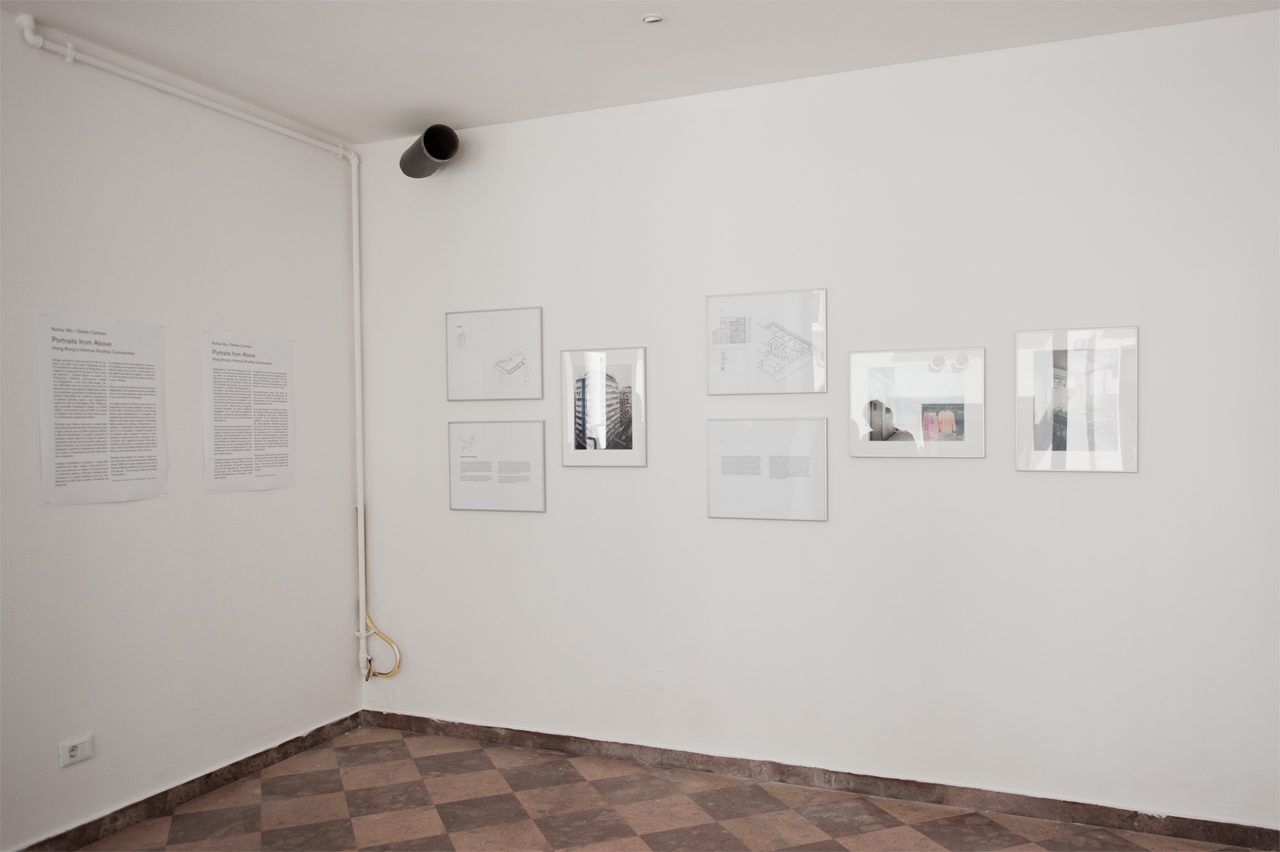
Stefan Canham, Protraits from Above, exhibition view, credit: foto-forum, Claudia Corrent
The roof is a maze of corridors, narrow passageways between huts built of sheet metal, wood, brick and plastics. ere are steps and ladders leading up to a second level of huts. We get lost. Our lea ets in hand, Ru na knocks on a door. ere is an exchange in Cantonese. Stefan stands in the background, the foreigner, smiling, not understanding a word. ey hear us out, smile back and invite us into their homes.
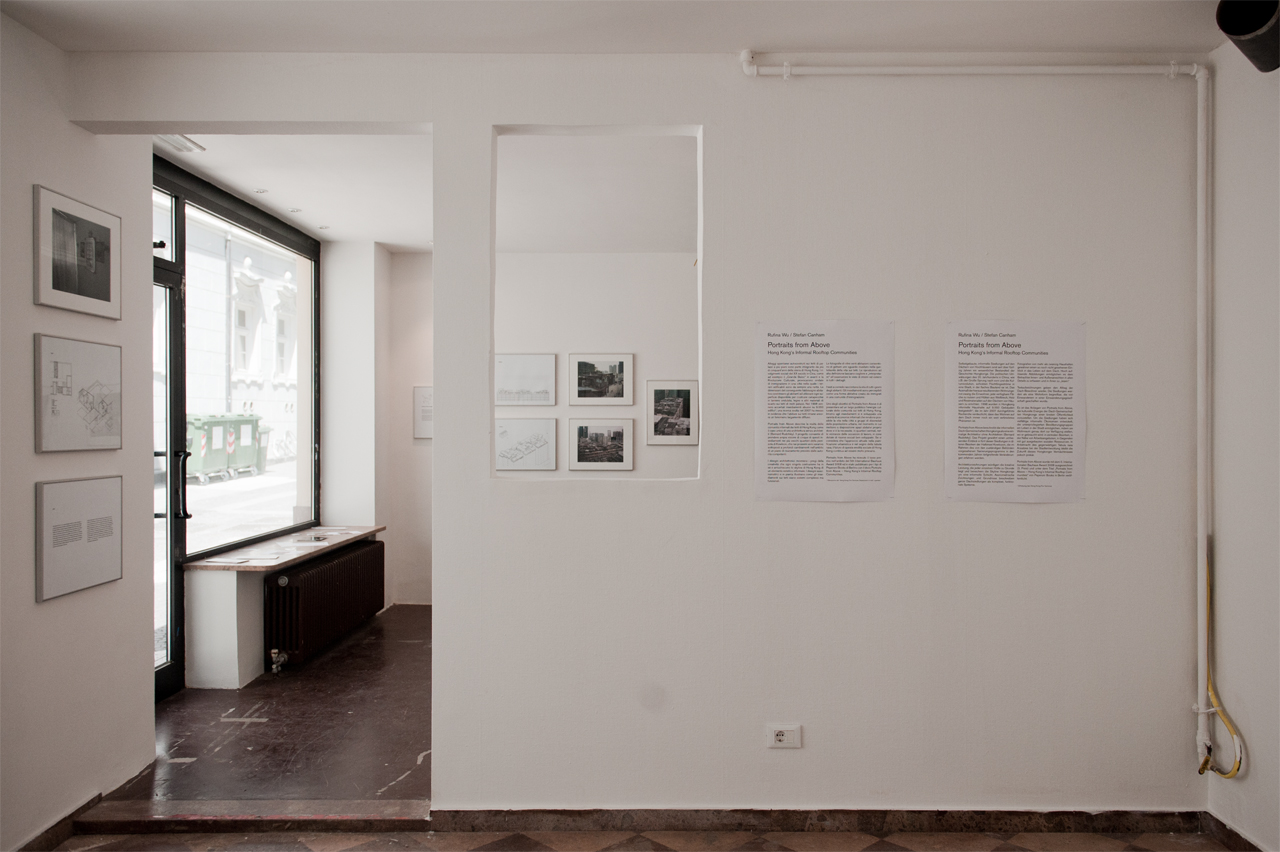
Stefan Canham, Protraits from Above, exhibition view, credit: foto-forum, Claudia Corrent
Later, we look down at the building from a higher one across the street. e roof is huge, like a village. ere must be thirty or forty households on it. From the outside there is no way of knowing what is inside. Whether they have Internet or not. Whether they have a toilet. And there is no way of knowing their stories.
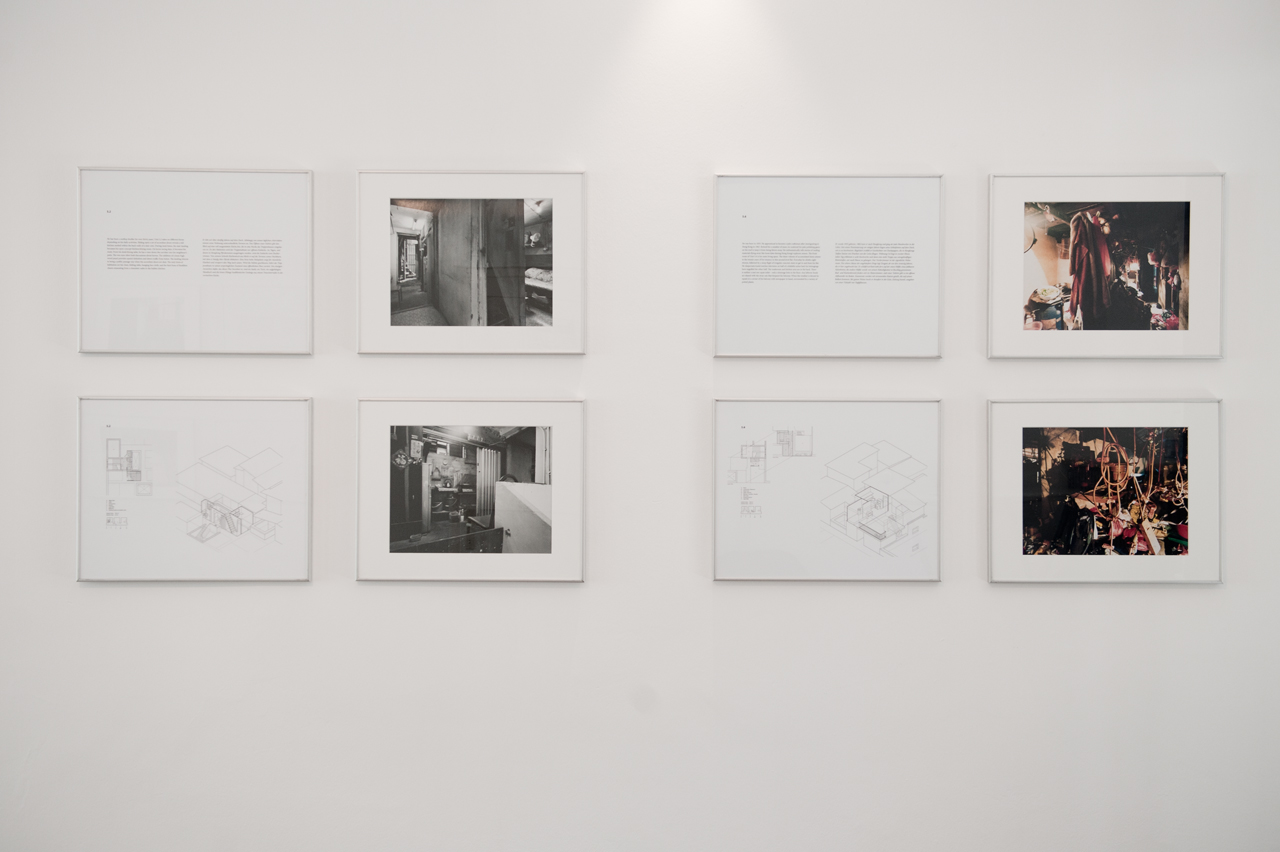
Stefan Canham, Protraits from Above, exhibition view, credit: foto-forum, Claudia Corrent
Who makes a picture of this? Who keeps a record? Sometimes a newspaper will print an article, or an NGO will launch a campaign. Various government departments keep les on so-called “unauthorized building works”, coding the huts with permanent markers and photo- graphing them. e les are not on public record, but residents may look at them to learn why their homes are to be demolished. Very rarely do roo op residents document their own spaces: the family pictures we saw were taken standing in a eld of sun owers, or in a village in the mainland, or down on the street beside someone else’s car, smiling.
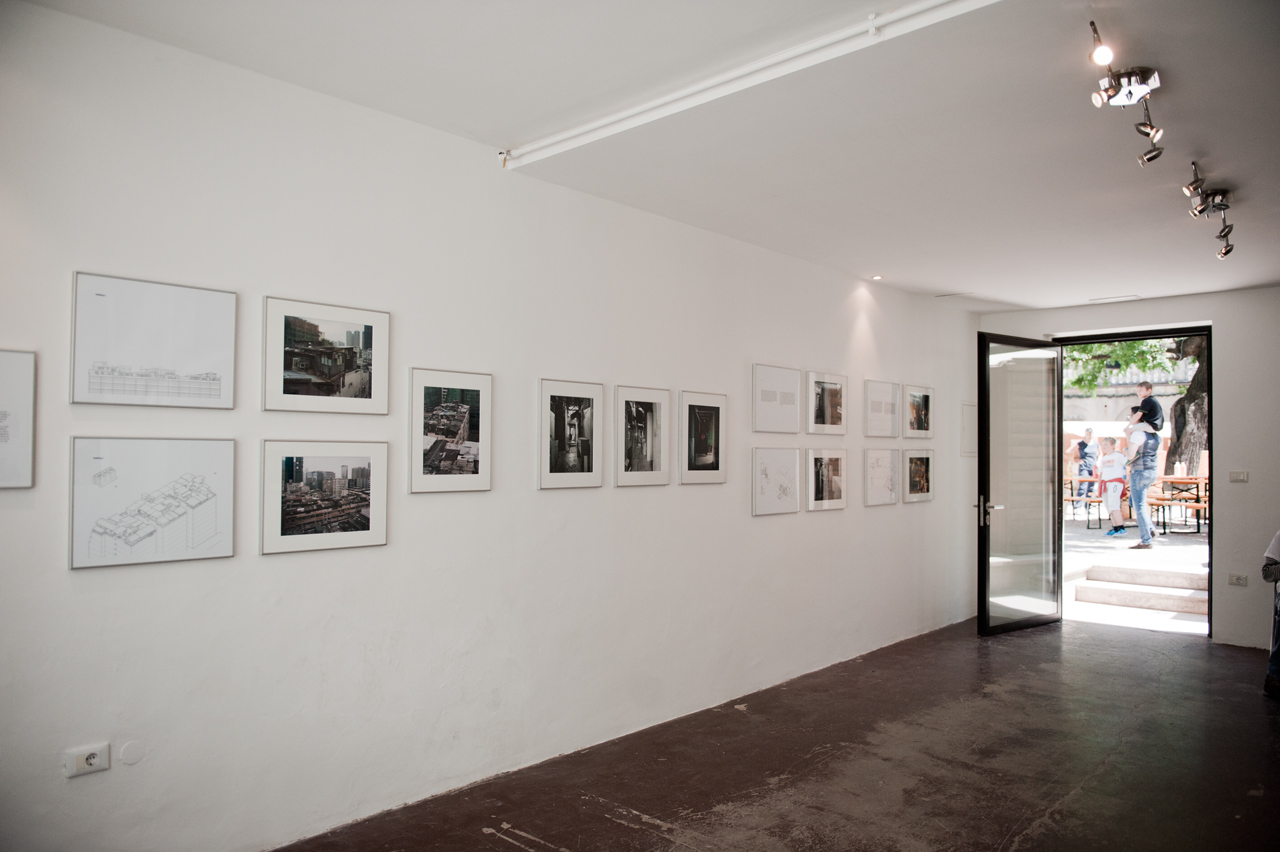
Stefan Canham, Protraits from Above, exhibition view, credit: foto-forum, Claudia Corrent
We walk up the stairs again. We no longer get lost in the corridors. We learn how resi- dents modify and maintain their homes. ere are people who have been living on the roof for twenty or thirty years who have helped to build the city. e new immigrants from Mainland China, from Southeast Asia, from Pakistan, continue to do so. In the seventies, they built the underground, and now they are working on the new tower blocks. Hong Kong’s older districts are being redeveloped. Some buildings are crumbling because they were built with salt water concrete. Others have to make way for taller ones that yield higher pro ts. Few roo op residents would mind living in the new towers, but they cannot a ord it. All are afraid of being resettled to the remote satellite towns, where there may be few opportunities and limited social networks.
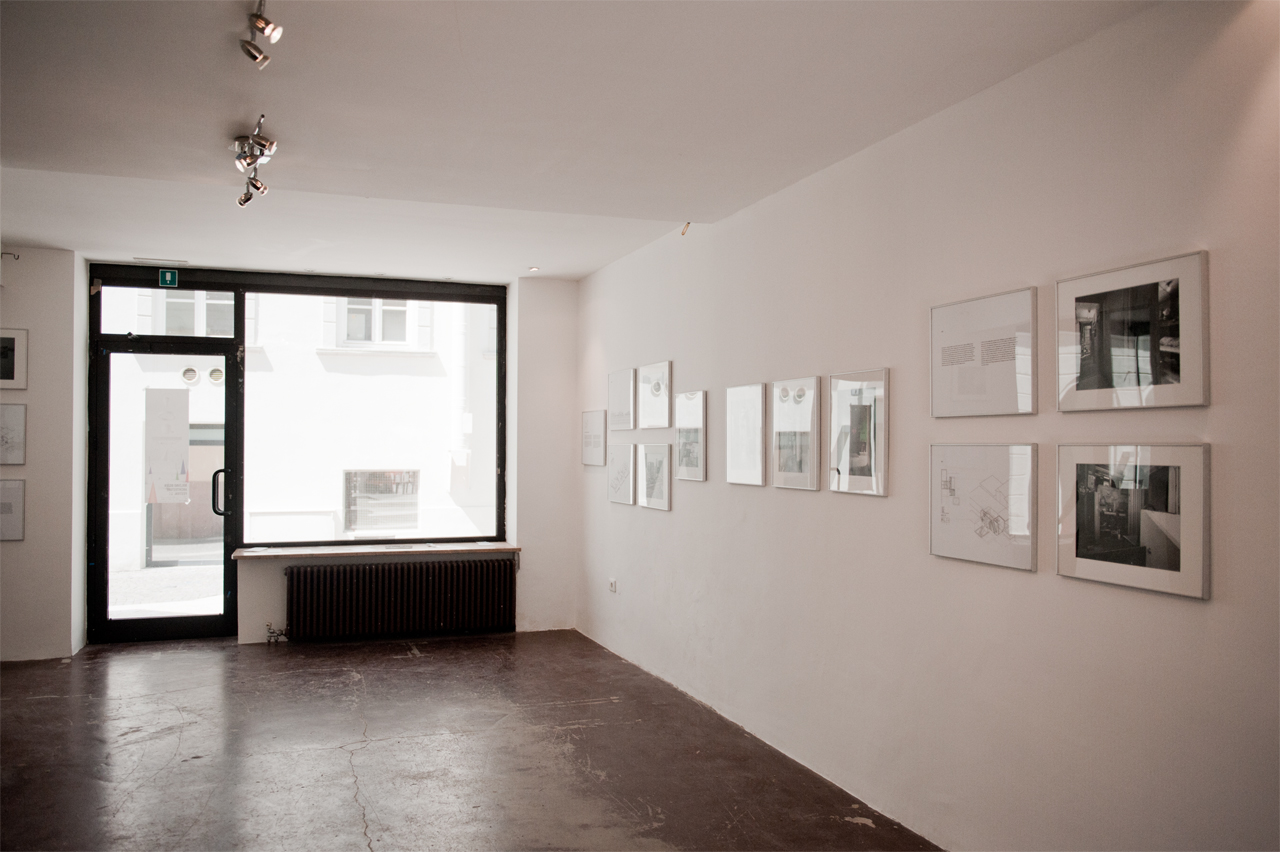
Stefan Canham, Protraits from Above, exhibition view, credit: foto-forum, Claudia Corrent
We walk up the stairs again. e roo op settlements are an urban legacy, telling the story of Hong Kong, of political upheavals in Mainland China, of urban redevelopment, of people’s hopes and their needs in the city.
Ru na Wu / Stefan Canham / 2008
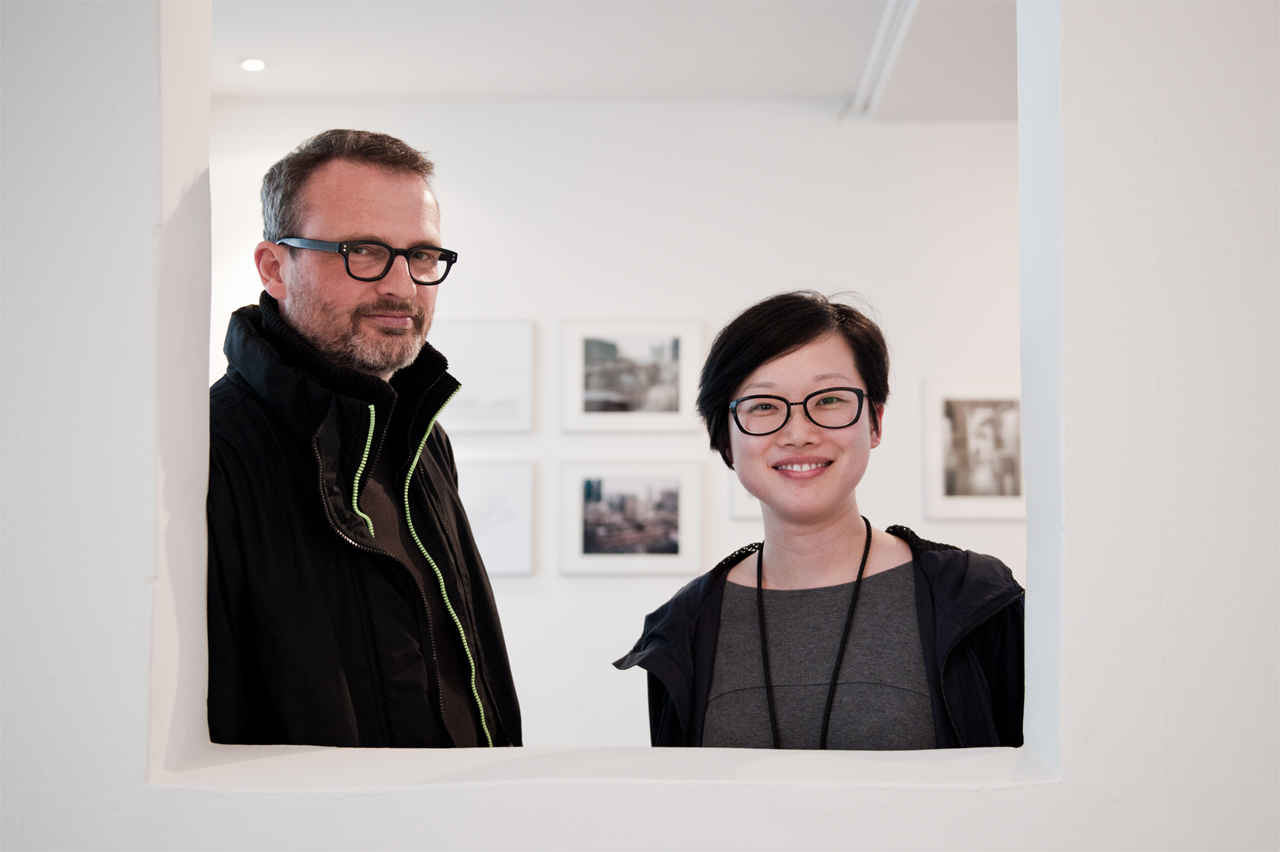
Rufina Wu, Stefan Canham, credit: foto-forum, Claudia Corrent

